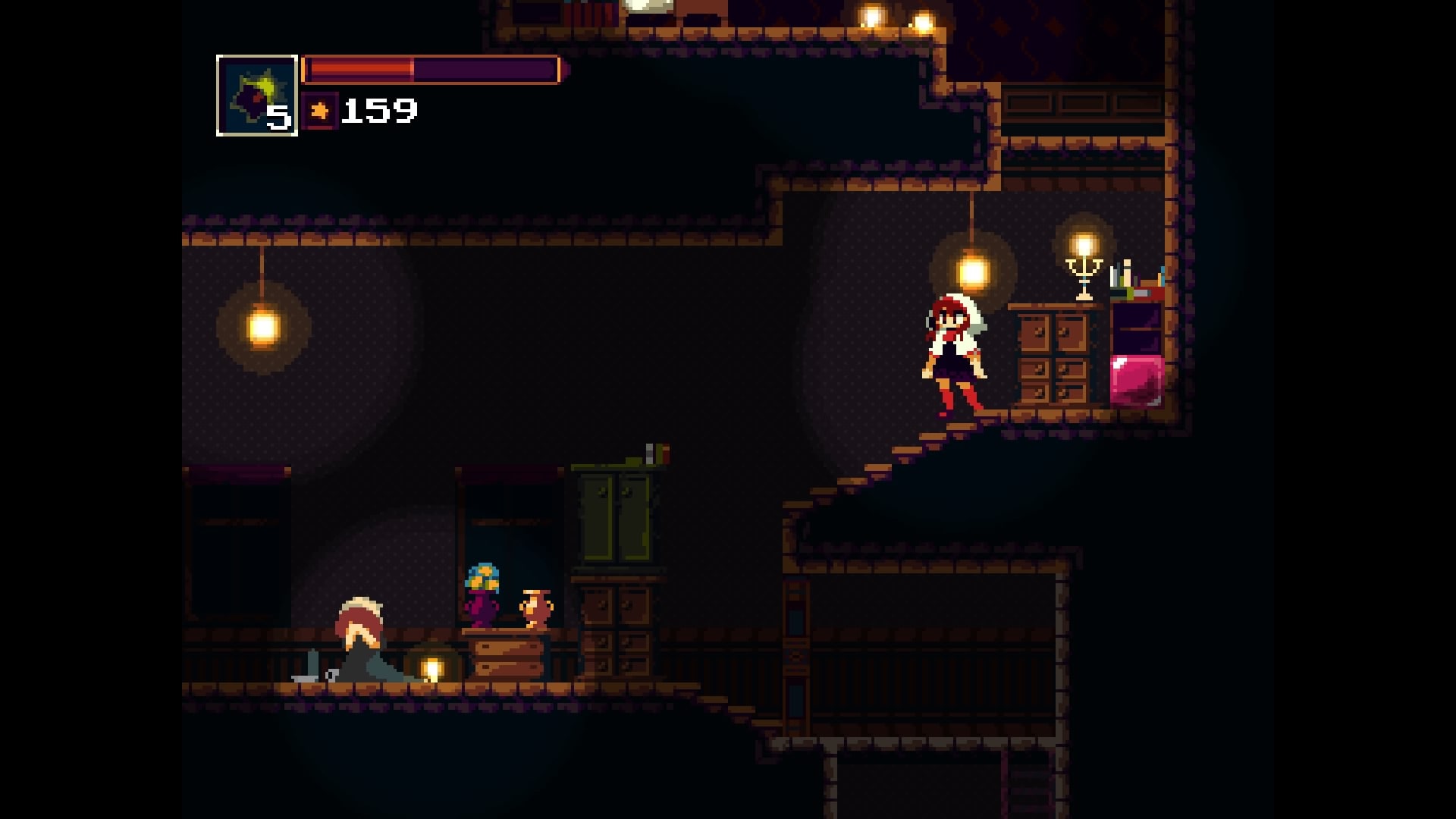

Of course, that comparison is slightly unfair – but I couldn’t escape the feeling that Momodora concluded too quickly to realize its true potential.Īt best, only speed-runners will appreciate its brevity. Players can probably squeeze out another 2 hours if they seek out every hidden item in the game, but doing so doesn’t really unlock a significant reward.įor reference, other independent Metroidvania titles like Hollow Knight can easily stretch to 40 hours with a similar setting. The game does offer a New Game+ option after beating the final boss, but there’s not much new content there. My ‘Easy’ run of the game lasted a grand total of just 4 hours – which is fairly brief for most Metroidvania titles. A Brief StayĪnother slight blemish on Momodora is how short it is.

I would have preferred at least some static background images in these empty spots, just like Undertale’s wonderful Switch port. These black borders are quite a shame, and really make the game feel rougher and less premium overall. All the screenshots in this review were cropped to be more presentable, but the game actually looks like this on Nintendo Switch: In particular, Momodora retains its original 4:3 aspect ratio – resulting in two black borders for wider 16:9 displays. The game’s retro presentation hasn’t aged all that gracefully, however.

This is accompanied by beautiful pixel art that harkens back to the 32-bit era – which still looks lively by today’s standards. Areas are distinguished by their primary color schemes, which keep exploration somewhat fresh. Momodora boasts a beautiful world, despite its dark and depressing tone. While the game’s simpler world map might not be for everyone, it does offer a nice entry point for beginners to the Metroidvania genre – so long as they play on Easy. The game’s boss fights are large spectacles, and will keep both veteran and casual players on their toes.

On a whole, the gameplay of Momodora is a pretty engaging sell at $14.99 USD. Most players will probably explore 100% of the world map on their first playthrough. Many areas in the game are fairly self-contained, with only one or two secret paths that connect them together. The game becomes a lot more accessible in this mode, and most players will be able to enjoy its battles without the seething frustration of dying countless times.Įxploration in Momodora is more streamlined compared to titans like the Castlevania titles. Indeed, Momodora is unapologetic about its Metroidvania roots – and careless players will quickly find themselves overwhelmed with the game’s gross difficulty curve.įortunately, Momodora does feature an ‘Easy’ difficulty setting – which starts Kaho off with more health and better defense. Kaho herself is likewise fragile, and can be killed with just around 6 hits in Normal mode. Her flimsy weapons mean that enemies are tough cookies to take down, often soaking up many slashes or arrows before expiring. Her quest isn’t simple, however, as Kaho is only equipped with a holy leaf and bow. If she fails, the corruption will spread beyond the city’s gates – and infect the entire world with monstrous horrors. Players take the role of Kaho, a priestess travelling to Karst City in order to purify a corrupting evil within. The game features an expansive world map, and certain areas only open up once players gain new abilities. A land of dark corruption! One priestess’ insurrection! In this review, we examine if Momodora: Reverie Under the Moonlight truly offers a higher caliber of platforming action! A Quintessential AdventureĪt its core, Momodora follows the classic Metroidvania formula to a tee.


 0 kommentar(er)
0 kommentar(er)
